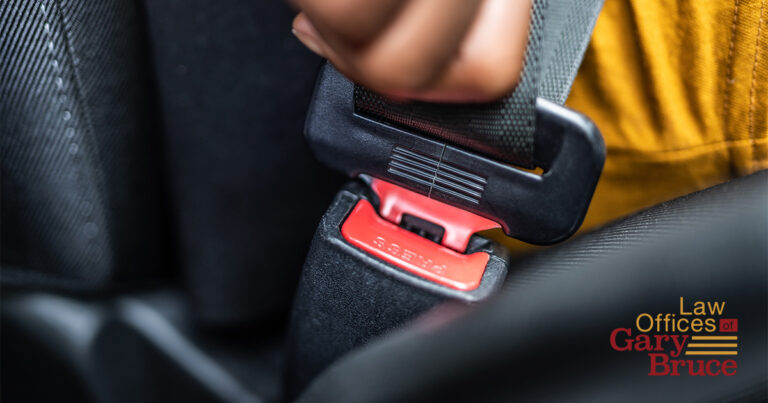Introduction
The decision not to wear a seat belt can significantly impact a personal injury case following a car wreck. Since wearing a seat belt is required by law, failing to wear a seat belt may limit the damages you can claim from a wreck. But the application of the law where it is allowed to be argued is difficult and cumbersome. And in Georgia, it has been held to be irrelevant to the calculation of damages. This blog focuses on the “seat belt defense” often raised by defendants in car accident cases (sometimes even when not allowed because it becomes pretty apparent from the injuries that the injured party was unbuckled), and how it works in court.
1. The “Seat Belt Defense”
The “seat belt defense” is an affirmative defense which, in some states, allows defendants to limit a plaintiff’s recoverable damages to those caused by the initial impact, or “first collision” with the at fault driver’s vehicle. Liability for any injuries which the jury believes would not have occurred if the plaintiff had been wearing a seatbelt is on the plaintiff themselves. Remember, though, this defense theory is only usable if wearing a seatbelt reasonably would have prevented the plaintiff’s injuries. This is often difficult or even impossible to prove, rendering the defense useless.
In Georgia and Alabama, this defense is not permitted at all because it is almost impossible to prove. The cost alone of bringing in experts to prove damages is prohibitive in most cases and pointless in all. But for the negligence of the responsible party, there would have been no injury. Even if it can be proven, the burden of proving the damage caused by not wearing the belt falls on the defendant!
VIDEO: Gary Bruce discusses the impact of not wearing a seatbelt on a personal injury recovery.
2. Comparative Negligence
In many states, the concept of comparative negligence applies when determining damages in a car wreck. This legal principle is used by the court to reduce the amount of damages that a plaintiff can recover in a negligence-based claim according to the degree of negligence each party contributed to the accident. For example, if a jury determines that a plaintiff is 30% at fault for failing to wear a seatbelt, they are only allowed to recover 70% of the damages they prove at trial. Their damages are “reduced” by 30% based on the comparative fault of the plaintiff. But proof of this issue is difficult, speculative, subject to difference of opinions and disruptive to the actual issues in a trial – in other words, it might take on a life of its own. Fortunately, it is not an issue in most cases for two reasons – one, it is not justified and, two, most people wear seatbelts these days anyway.
In cases we handle in Columbus, Phenix City and other surrounding areas, I have rarely ever seen it raised as a defense. Sometimes it is a factor when a person is ejected from a car in a wreck ( would that have happened if the seatbelt had been in use?) or when there is a product defect alleged. But in most cases, the issue is simply not one that comes up. Recent legislation is in the works to try to change that but given the common usage of seat belts these days, it seems like a pointless change.
3. Mitigating Legal Impact
If you are involved in a car accident where you were not wearing a seatbelt, all hope is not lost—there are practical steps to mitigate the impact of not wearing a seat belt on your case:
- Document all facts surrounding the accident and your injuries.
- Seek legal counsel to understand how the local laws might affect your case. As you would expect,most states have specific laws requiring the use of a seatbelt while driving.
- Consider all aspects of your behavior leading up to the accident that could influence your claim. Failing to wear a seatbelt is only a potential defense to mitigate a claim; it is not a complete bar to recovery. Other facts, like the other party being intoxicated at the time of the wreck, may makethe failure to wear a seatbelt completely irrelevant.
- It is not the cause of the injury – the wreck was caused by the negligence of someone else – soeven if it is raised by an insurance adjuster to try to intimidate you, just ignore them. The case value should NOT be impacted by the claim that you did or didn’t have a belt in use.
Consult with Gary Bruce
At the Law Offices of Gary Bruce, located in the heart of the Chattahoochee Valley, we have over 30 years of experience dealing with personal injury cases influenced by seat belt usage in Georgia and Alabama. Our understanding of local and state laws enables us to provide our clients with the best possible legal advice. We encourage anyone facing a personal injury claim to reach out for a free consultation to explore your options thoroughly.
